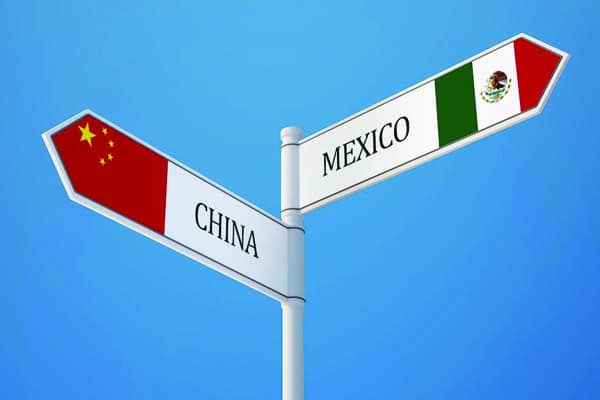Comparative costs of manufacturing in Mexico
Mexico Replaces China for Lowest Costs
When examining the monetary and other resources that are required to make products throughout the industrialized and newly industrialized world, the comparative cost of manufacturing in Mexico is amongst the globe’s most competitive. It appears that, for companies that wish to sell their product in North America, Mexico has dethroned China as the low-cost manufacturing venue of choice.
While Mexican wages have remained relatively stable over the last several years, Chinese labor costs have been growing steadily at a rate of approximately twenty percent per annum. This is because, as was the case in Japan, North Korea, and Tawain before it, as sources of employment become more plentiful in the country, Chinese workers demand more pay and benefits for fewer hours work. The Chinese government is also pursuing a higher wage growth strategy that has as its desired end an economy that is driven by a better balance between export-led expansion and increased domestic consumption. In this environment, some companies performing labor-intensive activities in China have made the move to its interior. Low wage, low skilled labor is still plentiful there but, in many instances, the infrastructure required to produce for world markets is not up to international standards.
Companies Experiencing Higher Costs are Moving from China
Some companies in this position have opted to migrate to Vietnam, which has wages that are, on average, ninety-two percent lower than those paid to Chinese manufacturing sector workers. Other companies have made their way to other regional low wage countries such as Cambodia, Indonesia, and the Philippines, as well.
[savings_estimate_cta]
Labor Costs in Mexico Compare Favorably to Other Countries
In this environment, the comparative costs of manufacturing in Mexico stack up well against both developed and developing country competitors. In a report, published by the United States Bureau of Labor Statistics at the end of 2012, Mexico was shown to be highly competitive among other nations in terms of its hourly labor compensation and annual percentage change in hourly compensation, and other wage-cost measures. For purposes of the BLS manufacturing compensation costs were divided into categories: (1) Direct Pay, and (2) Employer Social Insurance Expenditures and Labor-related Taxes. The Direct Pay category was further broken down into a) Pay for Time Worked, and b)Directly-Paid Benefits. Out of thirty-four countries examined, Mexico ranked number three with hourly compensation for manufacturing coming in at $US 4.50. The highest hourly compensation for manufacturing labor was paid in Norway in the amount of $64.10, while the United States ranked sixteenth with a total hourly compensation rate of $US 35.33. The only country surveyed in the BLS paper with a manufacturing labor rate whose hourly compensation was below that of Mexico was the Philippines at $US 2.01.
Labor Isn’t the Only Cost Savings Benefit of Mexico
Although there is a tendency on the part of some manufacturing executives to focus on the cost of labor when making manufacturing site selection decisions, in a world where many products’ value is comprised of a relatively low percentage of labor content, the concept of “total landed cost” is becoming a more accurate measure of the desirability of one manufacturing location over another. In general terms, the total landed cost of manufactured goods is made up of
- Raw materials and components
- Manufacturing costs (fixed and variable)
- Transportation and logistics costs
- Inventory and carrying costs
- Taxes and duties
While the comparative costs of manufacturing in Mexico is positively impacted by the wage variable alone, Mexico, for many industries, boasts cost advantages when compared to countries with whom it competes for foreign direct investment.
In terms of raw materials and components, due to the presence of strong clusters in the automotive manufacturing, aerospace (rapidly developing), and electronics industries suppliers of raw materials and components have, in many instances, located plants to serve manufacturers within Mexico. The firms that have done this have lowered the cost to their customers by accessing the advantage of comparatively low wage benefits that the country offers. This proximity to customers, in turn, has reduced manufacturers transportation and logistics costs, as well as virtually eliminated the need to carry large stocks of inventory, again, further reducing costs. Products that are manufactured in China, for instance, typically require the carrying of an inventory of about thirty days at each stage in the supply chain.
United States-Mexico-Canada Agreement
As a signatory of the NAFTA, which has now been replaced by USMCA, the comparative costs of manufacturing in Mexico is further decreased by the duty-free treatment that is afforded to goods and services that are exchanged by Canada, the U.S., and Mexico. Mexico has created an even greater competitive advantage for itself through having spent almost the last twenty years developing a sizable free trade agreement network now enhanced by the Trans-Pacific Partnership that covers commercial exchange with a total of fifty-four nations.
When considering the comparative costs of manufacturing in Mexico, wages are only a portion of the overall equation. Savvy executives must make sure to consider the “total landed cost of manufacturing,” when choosing where to locate low-cost facilities to serve the North American marketplace. By most measures, Mexico is today the venue of choice.
Readers are encouraged to read our blog at https://tecma.com for dozens of articles relevant to the benefits of manufacturing in Mexico

